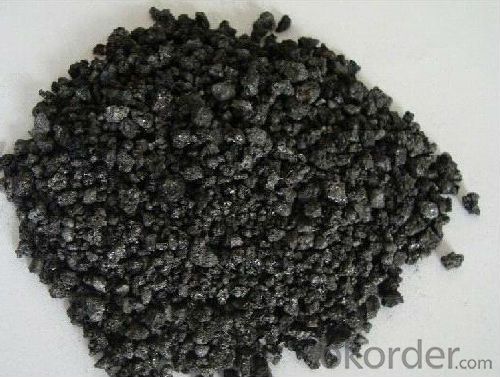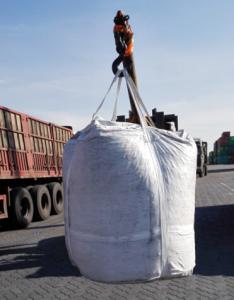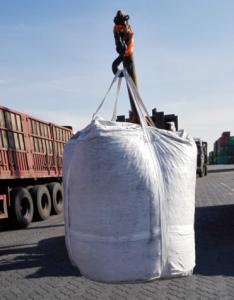Calcined Petroleum Coke Originated in China Best Price
- Loading Port:
- Tianjin
- Payment Terms:
- TT or LC
- Min Order Qty:
- 20 m.t.
- Supply Capability:
- 1500 m.t./month
OKorder Service Pledge
OKorder Financial Service
You Might Also Like
Packaging & Delivery
| Packaging Detail: | 50kg/bag 100kg/bag 1000kg/bag Or according with client need to do |
| Delivery Detail: | 2 weeks |
Specifications
Calcined Petroleum Coke Originated in China Best Price
Petroleum coke products can be divided into needle coke, sponge coke, projectile coke and coke breeze four kinds.
Calcined Petroleum Coke
F.C.: 98.5%MIN
ASH: 0.8% MAX
V.M.: 0.7%MAX
S:0.5%MAX
Moisture: 0.5%MAX
Structure
Calcined Petroleum Coke Originated in China Best Price
Shape: granule
Dimensions: 0-1mm, 1-5mm, 1-6mm, 2-8mm, etc
Product Type: Carbon Additive
C Content (%): 98-99.5% MIN
Working Temperature: -
S Content (%): 0.5%-0.7%MAX
Ash Content (%): 0.7%MAX
Volatile:0.8%MAX
Moisture: 0.5% MAX
ADVANTAGE: low ash & sulfur
COLOR: Black
Feature
Calcined Petroleum Coke Originated in China Best Price
Physics and chemistry performance :
Unit | Index | |||||
No.1 | No.2 | No.3 | ||||
Density | g/cm3 | 2.04 | 2.00 | 2.00 | ||
sulphur content | %≤ | 0.5 | 1.0 | 2.5 | ||
volatility | %≤ | 0.5 | 0.5 | 0.5 | ||
ash content | %≤ | 0.5 | 0.5 | 0.5 | ||
moisture | %≤ | 0.3 | 0.5 | 0.5 | ||
charcoal | %≤ | 98.5 | 98.0 | 98.0 | ||
Image
Calcined Petroleum Coke Originated in China Best Price


FAQ:
Calcined Petroleum Coke Originated in China Best Price
How to classify calcined petroleum coke?
1) According to difference of sulfur content, can be divided into high sulfur coke (sulfur content more than 4%), sulphur in coke sulfur content (2% 4%) and low sulfur coke (sulfur content below 2%).
2) Petroleum coke products can be divided into needle coke, sponge coke, projectile coke and coke breeze four kinds:
3) Needle coke, has obvious needle-like structure and fiber texture, mainly used for steel-making in high power and ultra-high power graphite electrode. As a result of needle coke in sulfur content, ash content, volatile matter and true density and so on have strict quality requirements, so the production process of needle coke and raw materials have special requirements.
4) The sponge coke, high chemical reactivity, low content of impurities, mainly used in the aluminum industry and carbon industry.
5) Focal or spherical coke: the projectile shape is round, diameter 0.6-30 mm, usually from the production of high sulphur, high asphaltic residual oil, can only be used as industrial fuel power generation, cement etc.
6) Coke breeze: fluidized coking process, the fine particles (0.1- 0.4 mm) in diameter, high volatile, high expansion coefficient, cannot be directly used for electrode preparation and carbon industry.
Advantage:
Calcined Petroleum Coke Originated in China Best Price
1. High quality and competitive price.
2. Timely delivery.
3. If any item you like. Please contact us.
Your sincere inquiries are typically answered within 24 hours.
- Q:What are the applications of carbon nanomaterials in medicine?
- Carbon nanomaterials have a wide range of applications in medicine, including drug delivery systems, tissue engineering, biosensors, and imaging techniques. They offer unique properties such as high surface area, biocompatibility, and the ability to carry and release drugs in a controlled manner. Additionally, carbon nanomaterials can be used for targeted therapy, regenerative medicine, and diagnostic purposes, making them promising tools for advancing medical treatments and improving patient outcomes.
- Q:What are the effects of carbon emissions on freshwater systems?
- Freshwater systems are significantly affected by carbon emissions, with one major consequence being the acidification of water bodies. When carbon dioxide dissolves in water, it creates carbonic acid, resulting in a decrease in pH levels. This acidification negatively impacts freshwater organisms like fish, amphibians, and invertebrates, as it disrupts their physiological processes and can even lead to their death. Furthermore, carbon emissions contribute to global warming, which in turn has an impact on freshwater systems. Rising temperatures can lead to increased evaporation, causing water scarcity in specific regions. This scarcity has severe implications for both human populations and ecosystems that rely on freshwater resources. Additionally, the warming of freshwater systems can disturb the balance of the ecosystem by promoting the growth of harmful algae blooms. These blooms thrive on excess nutrients, such as nitrogen and phosphorus, which are often present in runoff from agricultural and urban areas. The combination of higher temperatures and nutrient enrichment can result in the proliferation of harmful algae, which produce toxins that are harmful to aquatic life and human health. Moreover, carbon emissions indirectly affect freshwater systems through their contribution to climate change. As global temperatures rise, glaciers and polar ice caps melt, leading to an influx of freshwater into the system. This sudden increase in freshwater disrupts the delicate balance between saltwater and freshwater ecosystems, affecting the distribution and migration patterns of various species. It also alters salinity levels, impacting the survival and reproduction of marine organisms. In conclusion, carbon emissions have various negative effects on freshwater systems, including acidification, water scarcity, the proliferation of harmful algae blooms, and disruptions to the delicate balance between saltwater and freshwater ecosystems. It is crucial to reduce carbon emissions and mitigate the impacts of climate change to protect the health and sustainability of freshwater systems.
- Q:When will amines be fertilized?
- Rain does not applyAttention should be paid to the following problems in the application of ammonium bicarbonate:(1) ammonium bicarbonate can not be mixed with alkaline fertilizer in order to prevent ammonia volatilization and cause nitrogen losses.(2) to achieve the "five not": that is not mixed with fine soil without nitrogen, and there was dew without nitrogen, rain without nitrogen, Tian no inch of water without nitrogen, the sun does not apply. If fertilization time was sufficient, it is best able to make deep application of ammonium bicarbonate fertilizer or fertilizer ball. In addition, ammonium bicarbonate in transportation and storage, light light, close packed, stored in a cool dry place, not with the basic fertilizer and human excrement mixed, so as to avoid loss of effective fertilizer.(3) do not contact crops, seeds, roots, stems and leaves, so as not to burn the plants.(4) do not do fertilizer, otherwise it may affect the germination of seeds.(5): bogey and mixed fertilizer after application of ammonium bicarbonate will release ammonia, fertilizer and fertilizer will make contact, bacteria in the death of the fertilizer losing effect.(6) avoid spraying: spraying ammonium bicarbonate are easy to be burnt leaf, affecting crop photosynthesis
- Q:How does carbon affect the migration patterns of animals?
- Carbon emissions and the subsequent increase in greenhouse gases have been found to have a significant impact on the migration patterns of animals. One of the key ways carbon affects migration is through climate change. As carbon dioxide levels rise, the Earth's temperature also increases, leading to alterations in weather patterns and the timing of seasons. These changes can disrupt the natural cues and signals that animals rely on to initiate migration. For some species, migration is triggered by changes in temperature, daylight hours, or the availability of food sources. However, with climate change, these cues may become inconsistent or altered, leading to confusion and disruption in migration patterns. For example, migratory birds rely on the availability of insects and other food sources during their journey, but changing temperatures and shifts in plant and insect life cycles can affect the timing and availability of these resources, potentially leading to food shortages and impacting their ability to complete their migrations successfully. Additionally, carbon emissions have led to changes in habitat and ecosystems that further influence migration patterns. Rising temperatures and changes in precipitation patterns can alter the distribution and abundance of plant species, which can, in turn, affect the availability of food and shelter for migratory animals. Some species may find their traditional breeding or feeding grounds no longer suitable due to these changes, forcing them to alter their migration routes or patterns. Furthermore, carbon emissions also contribute to the melting of polar ice caps and the subsequent rise in sea levels. This has a direct impact on marine species that rely on specific breeding grounds or feeding areas. As their habitats shrink or disappear, these animals may be forced to migrate to new areas or face extinction. Overall, the increase in carbon emissions and resulting climate change have profound effects on the migration patterns of animals. Disruptions in weather patterns, altered cues for migration, changes in habitat, and shifts in food availability all contribute to the challenges faced by migratory species. Understanding and mitigating the impact of carbon on migration is crucial to ensure the survival and well-being of these animals in a rapidly changing world.
- Q:What are the effects of carbon emissions on the Arctic ecosystem?
- Carbon emissions have significant effects on the Arctic ecosystem. The increased levels of carbon dioxide in the atmosphere contribute to global warming, causing the Arctic to warm at a faster rate than the rest of the world. This leads to the melting of sea ice, loss of permafrost, and rising sea levels. These changes disrupt the delicate balance of the Arctic ecosystem, affecting various species, including polar bears, walruses, and seals, as well as their prey. Additionally, the acidification of the oceans due to carbon emissions further impacts marine life, such as plankton and shellfish. Overall, carbon emissions have detrimental consequences for the Arctic ecosystem, threatening its biodiversity and functioning.
- Q:What is carbon nanomembrane?
- A carbon nanomembrane (CNM) refers to an ultra-thin layer of carbon atoms arranged in a two-dimensional lattice structure. It is typically just a single atom thick, making it one of the thinnest materials known to exist. CNMs are created by depositing a precursor material onto a substrate and then using heat or chemical processes to transform it into a pure carbon layer. Due to its unique properties, carbon nanomembranes have garnered significant interest in various fields of science and technology. CNMs are highly impermeable to gases and liquids, making them ideal for applications such as gas separation and filtration. They also possess exceptional electrical conductivity, making them suitable for electronic devices and sensors. Furthermore, carbon nanomembranes can be engineered with tailored pore sizes and chemical functionalities, enabling their use in molecular sieving and biological applications. They have shown promise in areas such as drug delivery, water purification, and tissue engineering. Additionally, CNMs have demonstrated excellent mechanical strength and flexibility, which opens up opportunities for their use in lightweight and flexible electronics. Overall, carbon nanomembranes offer a versatile and exciting platform for a wide range of applications. Ongoing research and development in this field aim to further explore and harness the unique properties of CNMs for the advancement of various industries.
- Q:What is the role of carbon in the human body?
- Carbon plays a critical role in the human body as an essential element for all organic molecules, serving as the backbone for many biomolecules including carbohydrates, lipids, proteins, and nucleic acids, which are vital for various physiological processes. To begin with, carbohydrates, being the primary source of energy for the body, heavily depend on carbon. Glucose, a simple sugar consisting of carbon, hydrogen, and oxygen, undergoes cellular respiration within cells to release energy. Complex carbohydrates like glycogen, which are stored in the liver and muscles as an energy reserve, also rely on carbon for their structural composition. Moving on, lipids such as fats and oils contain carbon and serve multiple purposes including energy provision, insulation, and organ protection. Carbon atoms form long hydrocarbon chains in lipids, making them hydrophobic and enabling efficient energy storage and release. Lipids also play a crucial role in cell membrane structure and hormone production. Additionally, carbon is a fundamental component of proteins, which participate in almost all cellular processes. Proteins consist of amino acids, with carbon atoms forming the backbone of these amino acids, providing stability and flexibility to the protein structure. Carbon also contributes to the formation of peptide bonds, which connect amino acids to build proteins. Proteins are necessary for functions such as enzyme catalysis, molecule transport and storage, immune response, and cell signaling. Lastly, carbon is an indispensable element in nucleic acids such as DNA and RNA, which contain genetic information. Carbon atoms create the sugar-phosphate backbone of nucleic acids, ensuring structural stability. DNA carries hereditary information, while RNA plays a vital role in protein synthesis. In conclusion, carbon is crucial in the human body as it forms the foundation of organic molecules like carbohydrates, lipids, proteins, and nucleic acids. Its versatility and ability to form stable bonds allow for the diverse functions and structures necessary for life processes.
- Q:other parameters are figured out, the difference is only in the carbon and carbon is not very clear, just know that they are winding mode is the opposite, there are two kinds of most printers can be used, what is the difference between the performance of them? Two can use the printer in the selection of the best carbon or carbon? Why? Please cite several models as an example.Please answer in your own words. Don't factor,
- In fact, to teach you a simple way to distinguish between internal and external carbon, carbon, label paper dip ribbon, with black on the outside of the outer side is carbon, carbon is in inside, no performance difference, now generally used is the most carbon, such as the machine is to use carbon is better, because the wound is not the same, sometimes loose.
- Q:What does "2T-250,1U-200@300" and "1Y-100" mean in carbon fiber cloth reinforcement?
- This is the carbon fiber cloth at the bottom of the beam. The 2T-250 indicates that the bottom of the beam is made of carbon cloth, 2 layers wide and 250mm wide;
- Q:What is carbon neutral agriculture?
- Carbon neutral agriculture refers to farming practices that aim to balance out the amount of carbon dioxide released into the atmosphere with the amount removed or offset. It involves implementing sustainable techniques such as reducing greenhouse gas emissions, promoting carbon sequestration in soils, and utilizing renewable energy sources. The goal is to achieve a net-zero carbon footprint in agricultural activities, contributing to mitigating climate change impacts while ensuring food production and environmental sustainability.
1. Manufacturer Overview |
|
|---|---|
| Location | |
| Year Established | |
| Annual Output Value | |
| Main Markets | |
| Company Certifications | |
2. Manufacturer Certificates |
|
|---|---|
| a) Certification Name | |
| Range | |
| Reference | |
| Validity Period | |
3. Manufacturer Capability |
|
|---|---|
| a)Trade Capacity | |
| Nearest Port | |
| Export Percentage | |
| No.of Employees in Trade Department | |
| Language Spoken: | |
| b)Factory Information | |
| Factory Size: | |
| No. of Production Lines | |
| Contract Manufacturing | |
| Product Price Range | |
Send your message to us
Calcined Petroleum Coke Originated in China Best Price
- Loading Port:
- Tianjin
- Payment Terms:
- TT or LC
- Min Order Qty:
- 20 m.t.
- Supply Capability:
- 1500 m.t./month
OKorder Service Pledge
OKorder Financial Service
Similar products
New products
Hot products
Hot Searches
Related keywords































